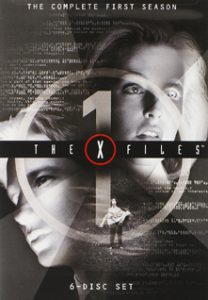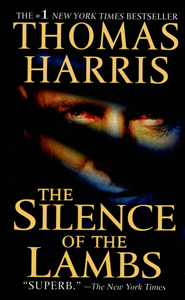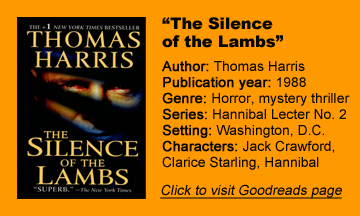To mark the 40th anniversary of author Thomas Harris’ invention of Hannibal Lecter and the 30th anniversary of “The Silence of the Lambs” – the only horror film to win Best Picture – we’re looking back at the four books and five films of the Hannibal Lecter series over nine Frightening Fridays. Next up is the “Silence of the Lambs” novel (1988):
Starling steps in
“The Silence of the Lambs” is structurally almost identical to “Red Dragon” from seven years earlier (visitors’ instructions for dealing with Dr. Lecter in his cell are copied verbatim), but Harris adds a lot of new elements onto that structure.
For our investigator, instead of Will Graham – male, veteran, eager to be done with the case – we have Clarice Starling – female, young, eager to solve the case.
Harris shows remarkable insight into what it’s like for Starling from the perspective of a learner and a woman. In tense situations such as her search of a storage garage (which turns out to feature the first clue, a severed and pickled head) and the conclusive basement showdown with Buffalo Bill, the author takes us into Clarice’s mind.
She pushes her fears to the side for the moment and coaches herself step by step through the situation, using what she’s been taught, right down to basics such as “gun barrel just below the eye line.”
Precursor to Scully
I noted in my “Red Dragon” review that Graham might’ve been an inspiration for Mulder in “The X-Files,” but that’s a loose link: Both start off as profilers who write a legendary monograph in FBI circles, but their personalities very much diverge. Starling, though, is an obvious precursor to Scully in the way she uses her dedication to school to climb the career ladder, tamping down the regular, subtle sexism she encounters.
It’s a theme throughout “Silence of the Lambs,” but Harris underscores it fairly late in the book when Starling notes that all of Buffalo Bill’s victims are women, yet there are no full-time female agents working the case.
Her boss, Crawford, probably realizes this, too; it’s probably not accidental that this is the book where we learn he has a strong woman in his life, his wife Bella. Since “Hannibal” novels can’t ever be cheery, he’s saying goodbye to the dying Bella even as he takes on Starling as a protégé.
More of an archetypical gruff, experienced boss in “Red Dragon,” Crawford becomes a great character here. He’s not one to openly talk about office politics, but he knows how to play the game, and he knows that Starling’s understanding of the victims (she will see things in their bedrooms that men would not notice) will be a crucial asset. Crawford asks a lot of Starling, but is also there as an ally within the largely inflexible internal bureaucracy.
Replacing reporter Lounds as the problematic interloper is Chilton, Dr. Lecter’s mental-ward handler who returns from “Red Dragon.” Here again, Harris provides the woman’s perspective.

The lonely Chilton is interested in Clarice, but it’s a one-way thing. Upon being rejected, he becomes a thorn in her side as she attempts to interview Lecter without interference. This is something Will didn’t have to deal with.
Clarice is still a full-time student at Quantico, which makes it odd that Crawford uses her so much (or at all), but we’re steadily reminded of the cost to Clarice, as the inflexible FBI might “recycle” her (make her redo the semester).
Will is psychologically troubled, and Clarice certainly has a tragic backstory too (from which the title is derived), but for Clarice a big issue is plain old time management.
Different from the clichés
So many details of this case are intriguingly different from the clichés, yet plausible thanks to Harris’ details. Buffalo Bill hunts not great-looking women, as you’d expect, but instead heftier women, as he aims to make a skin suit that will fit him. (A tip of the cap to Harris for coming up with a villain with an even creepier affectation than Francis Dolarhyde.)
The author also shows impressively detailed knowledge about transsexualism, being careful to note that Buffalo Bill is not emblematic of all transsexuals, and indeed, he most likely is not a transsexual at all.
Dr. Lecter’s role is beefed up here, as Harris knows he has a breakout star on his hands. We get more interviews, plus the doctor’s escape in which he uses a brilliant trick that would later be stolen by “Halloween H20.” Speaking of movies: “Red Dragon” was adapted into “Manhunter” before Harris wrote “Lambs,” so cinema might’ve been somewhat on his mind.
The basement showdown between Buffalo Bill (wearing night-vision goggles) and Clarice (armed with her training) is a nice example of how Harris’ style of switching between points of view within a sequence can be effective.
Along with the choppy sentences, the sudden shift in perspective adds intensity when we don’t get that spacing break, and I didn’t find it hard to follow the POV transition. Harris’ writing might’ve served as a template for what the “Lambs” movie wanted to capture in this sequence.
Even with my knowledge about the “Hannibal” books and films being minimal going into this reading/viewing project (my fandom was isolated to the TV series), it’s impossible not to picture Jodie Foster when reading “The Silence of the Lambs.”
But it should be noted that Harris thoroughly created Clarice Starling on the page first, and I’ll be looking forward to her further adventures in the “Hannibal” novel.


